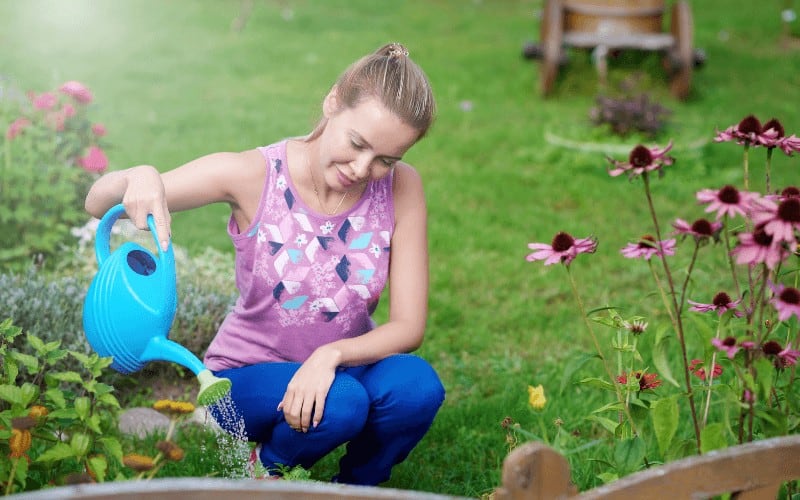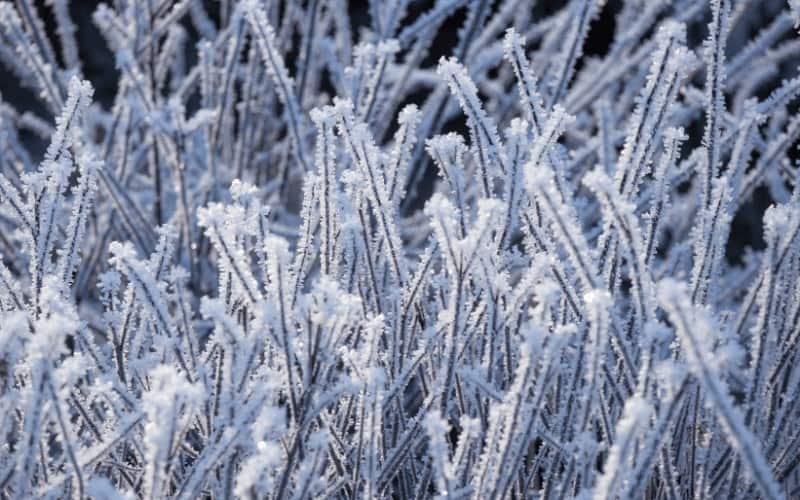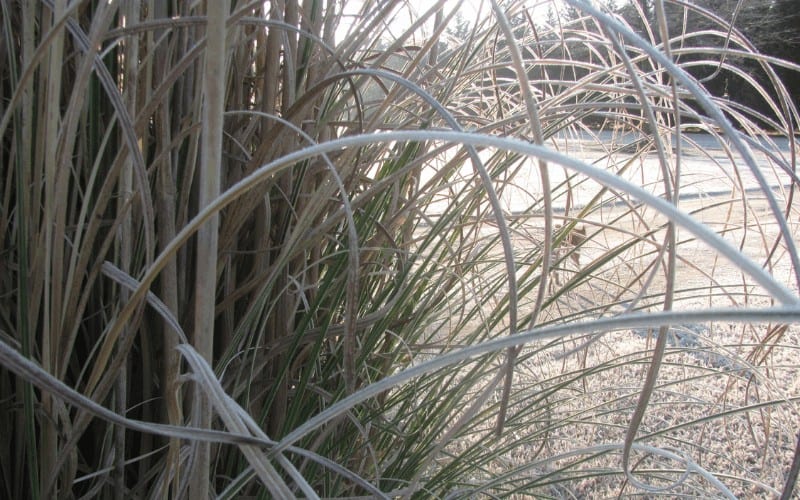Spring is such an unpredictable time of the year. Today it's 65°F and sunny, and the next, its 32°F with unexpected freezing snow on the ground. Frost is a natural occurrence we can't control, which is capable of causing severe damage to the garden.
And this is why many gardeners and home growers have hacks such as spraying water on plants right before the expected frost. Now, many gardeners often ask the question, does spraying plants with water prevent frost damage?
Well, the answer is yes, spraying water on plants does prevent frost.
Let's get to the details below!
Table of Contents
Does Spraying Plants With Water Prevent Frost Damage?
Water serves as an insulator to plants. Plant cells that are well saturated in water will thrive more and be more robust against frost.
Also, moist soil is likely to remain warmer than dry soil, so a regular watering schedule in cold, dry weather is approved as it can help protect plants from frost when the mean temperature comes.
Spraying plants with water to prevent frost is a hack that has been used by gardeners, especially strawberry and blueberry growers. They use this technique to protect their plants from spring freezes. Many grape and apple growers also swear by this water spraying technique.
The spraying water technique is beneficial under certain circumstances, such as if the atmospheric conditions have been dry, it is vital to water your outdoor plants before a freeze takes place thoroughly. Plants that have a shortage of water supply are often harmed more by frost injuries.
Extreme dry conditions could pose more harm and more damages to plants than the frost itself. Frost air is usually a bit dry, and if it is during winter, winds can evaporate moisture from plants faster before the roots get a chance to absorb it.
This is very common with evergreens plants as water evaporates readily from their leaves. However, watering should be in moderation, and if the plants are overwatered, it can cause vulnerability hence leading to increased frost injuries.
Before frost, ensure your plant's wellbeing is not compromised because spraying plants with water does not provide any protection to tender plants, and they do not protect below 23-24 degree F.
How it works
Spraying plants is a way of active frost prevention, among others, which includes wind generation, soil saturation, and heaters. Damping the soil of a garden with water is the least expensive form of protecting your plants against frost.
During frost, at the point when 1 g of water freezes, it discharges about 80 calories of warmth. A plant leaf encompassed by water that is freezing will stay at 32 degrees F for whatever length of time considering how long the frosting process remains active.
The mechanism of operation this watering technique uses is quite simple. To spray your plants with water during frost is to protect them through the use of ice actively.
At the freezing point of water, it emits heat. Along these lines, if your plants have a slim layer of water on them that freezes, it helps keep them warmer.
Also, the layer of ice, a fine insulator, will, at that point, help keep the plant warm through the frost.
On the off chance that the temperature isn't much below freezing, the rate at which high temperate is transferred, hence reducing the warmth level of your plants. If there is a ton of water present, the high-temperature mixture means that it will require some time to freeze a lot of it. So perhaps the plant endures the night without excessive harm.
Note that on the off chance that it doesn't heat up enough for the warmth level to expand the following day, the next frost night will harm them because that the freezing time is near.
How Spraying Water On Plants Prevents Frost Damage
Water saturated in plant cells serves as a protective cover, also known as an insulator, padding the plant cell wall and shielding it from the damaging impacts of a freezing night.
Water likewise expands the soil's capacity to hold heat absorbed from the sun, protecting the plant's foundations and shielding them from damage.
Since very damp air has heat superior to dry air, the dehumidified water likewise gives a layer of security to the plant's foliage and sprouts.
Plants most in need of frost protection are tropical such as Hibiscus, Citrus, Aloe, Bougainvillea, Bananas, Ficus, Brugamansea, Canna, or Poinsettia.
A few of the hardier plants which seldom need protection are the conifers, most cacti, deciduous trees, perennials with bulbous roots, woody-stemmed plants, ornamental grasses, most native plants, and roses.
In some cases, excessive spraying: overwatering can lead to soil waterlogging, which could cause different problems like root rot as well as limit cultivation and other growth activities.
When to Spray Plants With Water
To protect your plants, use a block of ice covering; the water spraying process must begin not long before frosty temperatures start and proceed continually until the end.
Fluid water must be ceaselessly applied for the protective benefits to happen. When the spraying seizes, the ice turns into a similar temperature as the air, and frost damage will occur.
Wide spraying the day before a frost night ought to give enough moisture content to shield most plants from feeling the impacts of frost damage.
Water your plants promptly in the day, when the temperature arrives at 40 degrees Fahrenheit. This permits the plant sufficient opportunity to retain the already absorbed dampness.
Spray water around the plant's base before night time while the temperature is a little over 40 degrees Fahrenheit with the goal that the soil remains damp all through the frost night,
Like air, water has temperature levels that are measured with a thermometer or soil moisture meter with a temperature feature, and this water heat levels increase or decreases depending on changes in the temperature content.
Understanding changes in heat temperature content of water is crucial to understanding frost protection and to avoid waterlogging the plant's soil.
Conclusion
Frost occurs naturally, and we can never master its tricky ways. The hardest (coldest) frost happens around evening time when a mass of cold air has moved in from the Arctic.
Starry evenings produce more cold frosts than do shady evenings, which can, in turn, cause genuine harm in the nursery and to the land.
Also, if the ground freezes, the underground water becomes ice stones, which cannot be absorbed by plant roots. So the answer to the question "does spraying plants with water prevent frost damage?" is yes. Even dormant plants require and drink water all year-round to survive cold frosts.







